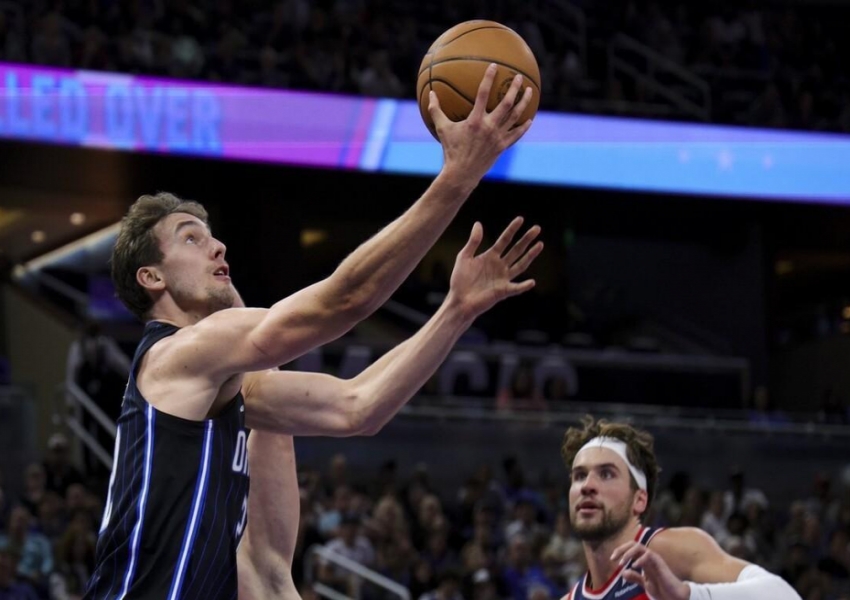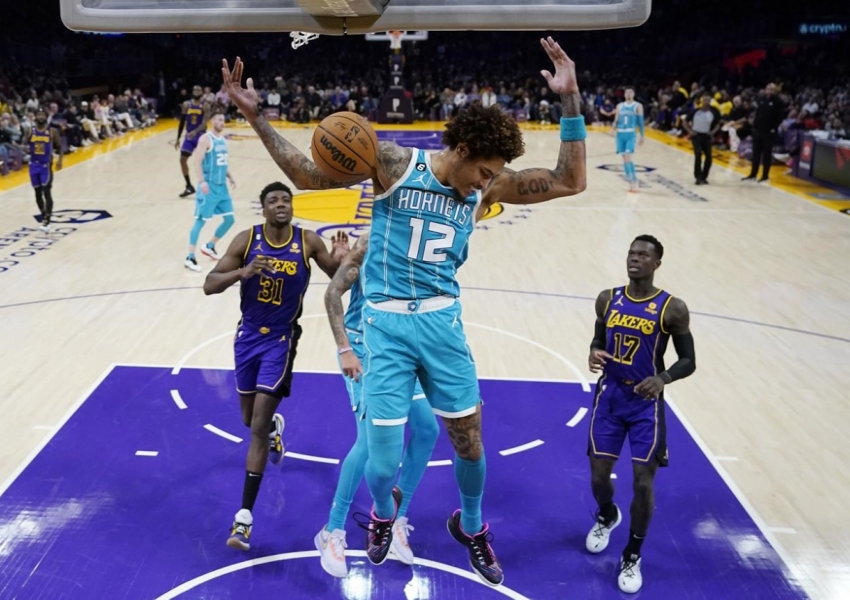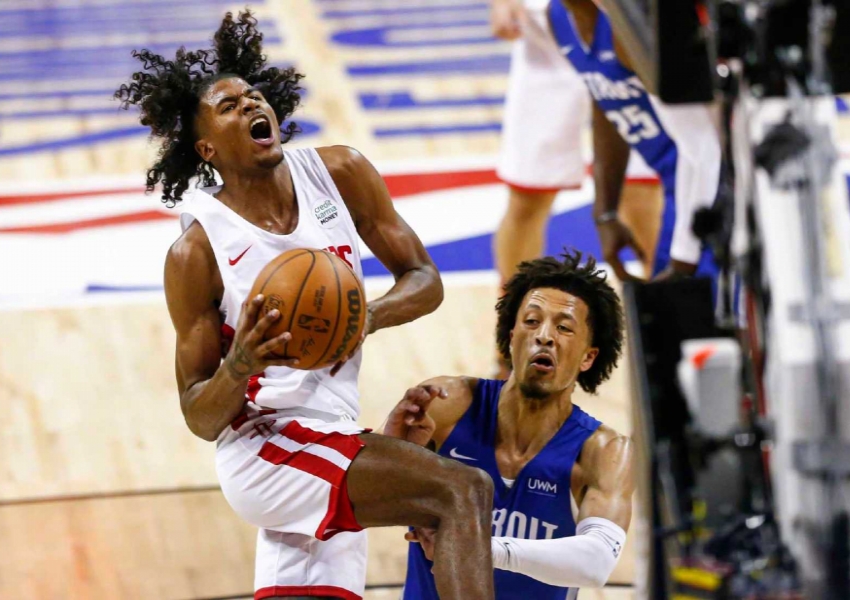Why Isn't He Worth More? One Rising Star with 19+ PPG Gets $270M, Another Becomes Trade Bait
When evaluating a player's worth, there are many factors to consider, but statistics remain the most straightforward measure. This is why many players tend to have breakout seasons in their contract years. Of course, padding stats requires skill; while basic stats can be inflated by usage, advanced metrics are much harder to manipulate. Some players, like Kelly Oubre, who averaged 20 points and 5 rebounds per game in the 2022-23 season, ended up with a one-year minimum contract. This shows that "stat padding" is also a skill, and it explains why two players from the 2021 draft class with similar averages, Jalen Green and Franz Wagner, are treated so differently.

Jalen Green, the second overall pick, and Franz Wagner, the eighth pick, both hold significant roles on their respective teams, with each having an average of over 15 shots per game and a usage rate of over 25%. Their basic statistics are quite similar. Green averaged 19.6 points, 6.1 rebounds, 3.5 assists, 0.8 steals, and 0.3 blocks per game with shooting splits of 42.3% from the field and 33.2% from three. Wagner averaged 19.7 points, 5.3 rebounds, 3.7 assists, 1.0 steals, and 0.3 blocks per game with shooting splits of 48.2% from the field and 28.2% from three. Despite these similar stats, Wagner secured a maximum extension worth up to $270 million over five years, while Green finds himself on the trade block with the Rockets actively shopping him.

At first glance, Green might feel this situation is unfair, but a deeper analysis reveals the reasons behind this disparity. Basic statistics only tell part of the story; advanced metrics and efficiency are where the differences become clear. Wagner’s true shooting percentage (TS%) exceeds 57%, approaching 59% last season, which is close to elite levels. His offensive real plus-minus (ORPM) is +0.9, ranking him just below players like Kawhi Leonard, DeMar DeRozan, Brandon Ingram, and Michael Porter Jr. among those with a usage rate of at least 20%. Despite being a European big man, Wagner plays with an explosive and athletic style, featuring a refined skill set and sharp driving ability.

Defensively, Wagner is impressive as well, with a defensive real plus-minus (DRPM) of +0.3, ranking him 10th among his peers. When Wagner is on the court, the Magic outscore opponents by 4.3 points per 100 possessions; when he sits, they are outscored by 1.9 points per 100 possessions. While Paolo Banchero may be seen as the leader of the Magic, Wagner’s impact on the team is significantly greater. With Banchero on the floor, the Magic are outscored by 0.1 points per 100 possessions, whereas with Wagner, they outscore opponents by 7.0 points per 100 possessions.
On the other hand, Jalen Green’s efficiency and impact are less favorable. His TS% stands at just 54.1%, barely above the league average. His ORPM is +0.4, ranking him third from the bottom among players with a usage rate of at least 25%, only ahead of Jordan Poole and Jordan Clarkson. Despite Green's athletic prowess, his shot selection leaves much to be desired, with too many forced attempts. Defensively, Green struggles even more, with a DRPM of -0.9, making him one of the league's worst defenders. When Green is on the floor, the Rockets are outscored by 0.5 points per 100 possessions; when he sits, they outscore opponents by 4.2 points per 100 possessions.
In Orlando, Wagner has established himself as a cornerstone of the team, with both his statistics and the team's success reflecting his value. Meanwhile, Green, despite his ability to rack up points, hasn't shown the ability to elevate his team. This disparity in performance and impact explains the differing treatment by their respective franchises. Green has one more year to change this narrative, to prove he can contribute to winning and elevate his game beyond just accumulating stats.
The case of Green and Wagner illustrates the complexity of evaluating player worth. Basic statistics provide an initial impression, but advanced metrics, efficiency, and overall team impact reveal the true value of a player. Wagner's ability to excel both offensively and defensively, along with his significant positive impact on the Magic, has rightfully earned him a lucrative extension. Green, on the other hand, must demonstrate that he can play winning basketball and improve his efficiency to avoid becoming just another high-volume scorer without substance.
Copyright Statement:
Author: focusnba
Source: FocusNBA
The copyright of this article belongs to the author. Reproduction is not allowed without permission.
Recommended Blog
- China's Basketball Future in Doubt: Lin Wei's Permanent Ban?
- Taking a Break! Cui Yongxi Temporarily Exits NBA! China's Top Forward Shows True Grit...
- Just 1 Point! Team USA Nearly Upset, Embiid's Bold Comments Backfire!
- 7’0”, 7’5” Wingspan! The Second Overall Pick Already a Bust After Four Games?
- 51-Point Man to Replace George? Lakers Fast-Track Trade! The Ideal Third Option...
- A Sad Ending for Another Star: Once the Second Best Shooting Guard in the East, Now Out of Work for 150 Days
- Two Weeks Without an Offer: Why Isn't Anyone Grabbing a Former Near All-Star with Career Averages of 20+5?
- Leave, Klay! Even if It Means a Minimum Salary, Don’t Stay with the Warriors
- From Playoff Fringe to NBA Champions: How Brad Stevens Turned the Celtics into a Contender in Just Three Years
- No Takers! NBA's Biggest "Negative Asset," 29-Year-Old All-Star, 15 Trade Attempts, 15 Failures